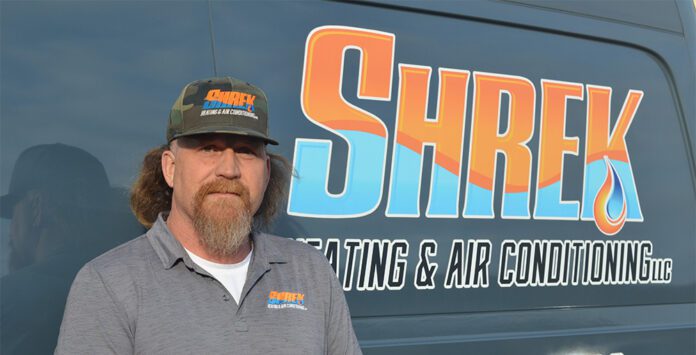One of the weapons that can be used to fight the ongoing challenge of climate change is the electric heat pump. Electric heat pumps move heat from one location to another, instead of producing it.
In colder months, they pull heat from outdoor air and bring it inside. In hot weather, they send the heat outside. Since heat pumps move heat rather than make it, they use less energy than traditional heating systems and don’t make the pollution that comes from burning fossil fuels.
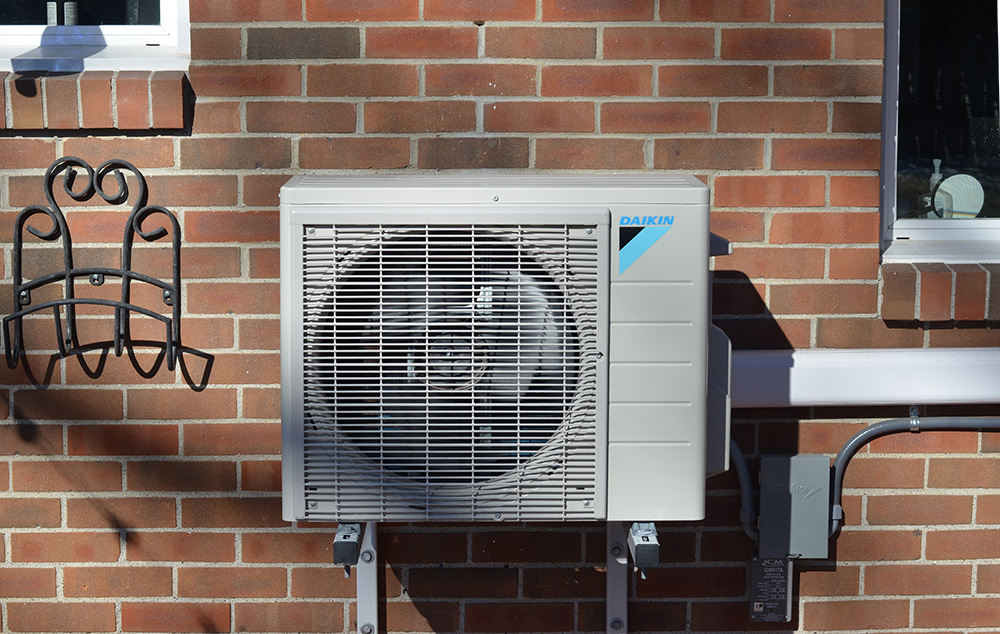
Heat Pumps are popular. More units were sold than gas furnaces in 2024, carrying on a trend that started in 2022. In 2023, Americans bought 21 percent more heat pumps than gas furnaces (see figure). Keep in mind that some homes have more than one heat pump.
In September 2023, the U.S. Climate Alliance, a coalition of 25 states, publicized plans to install 20 million heat pumps by 2030. To hit this goal, present install rates need to increase 300 percent. Ohio is not a member of this alliance.
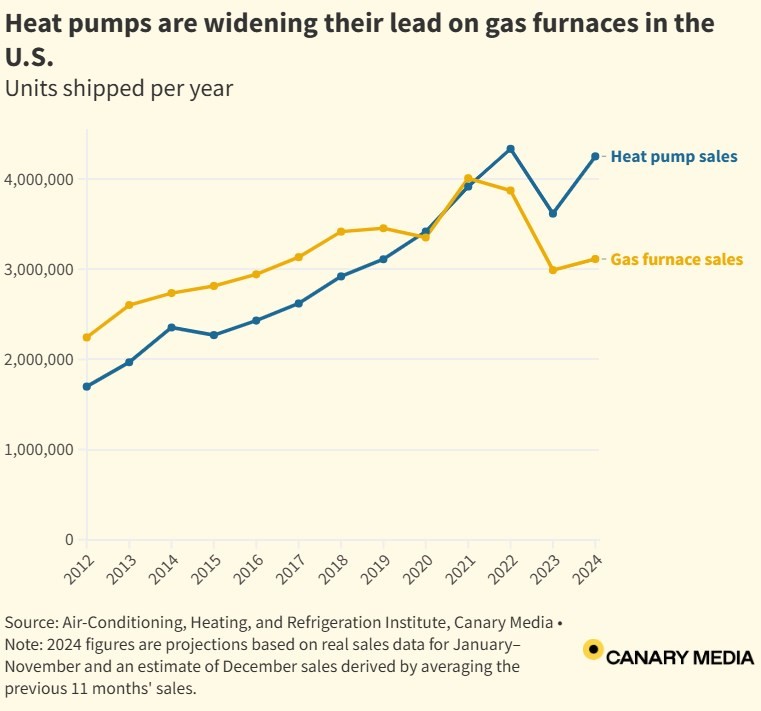
There are several good reasons for the growing popularity of heat pumps.
One strength is their stingy use of electricity. Modern heat pumps can function at 300 to 400 percent efficiency or more. In other words, they produce three to four times more heat energy than the electricity they use. The best space heaters achieve only 95 percent efficiency. Using less electricity saves money.
Heat pumps offer financial savings. A National Renewable Energy Lab (NREL) study found that out of the 49 million households using electricity, fuel oil or propane for heating, and using air conditioning, 92 to 100 percent could lower their energy bills (see Fig. 2).
Yearly savings are usually between $300 and $650, depending on the heat pump’s efficiency. Homes that use natural gas for heating would experience smaller, if any, savings. 64 percent of Toledo homes are heated by gas, while 26 percent are heated with electric power.
Heating and cooling accounts for about 60 percent of household emissions. Heat pumps can cut heating-related fossil fuel use by 40 percent or more. Over 15 years, heat pumps, specifically in Ohio, will lower fossil fuel emissions into the atmosphere by as much as 36 percent compared to gas furnaces. This is important since household emissions contribute to climate change.
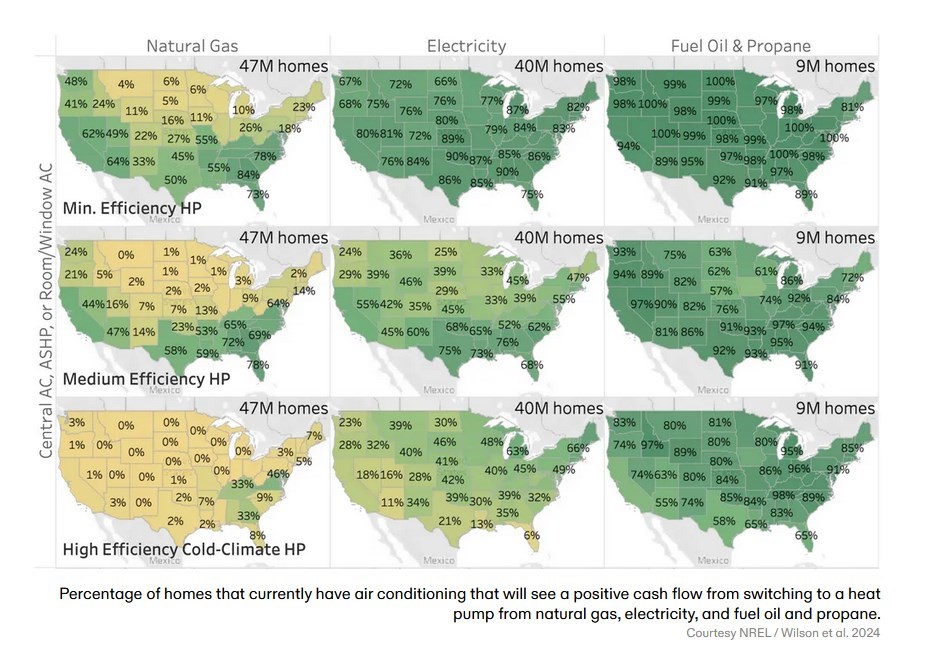
Heat pumps are healthier than gas-burning furnaces since gas heating systems are a major source of indoor air pollution, according to the EPA. When gas appliances malfunction, they can produce carbon monoxide (CO), which interferes with the blood’s ability to carry oxygen and can worsen heart conditions.
Natural gas used in homes often includes volatile organic chemicals (VOCs), such as benzene. VOCs can cause cancer and may form harmful pollutants, like particulate matter and ozone, when leaked. This particulate matter (PM) from gas heat can harm health. PM can irritate the eyes, nose, throat and lungs, increase the risk of heart attacks, and increase hospital visits for heart-related conditions.
To learn more about heat pumps, I talked to Brian Vanderhorst, the founder and owner of Shrek Heating & Air Conditioning, founded in 2017. Vanderhorst has been in the business for 20 years. He states that he has spent significant time “learning about all facets of the industry, one of those being the operation and installation of heat pump equipment.”
One of the characteristics of heat pumps is that they become less efficient in cold weather. But, according to Vanderhorst, “the capacity to deal with the cold has advanced considerably with inverter-driven compressors and temperature sensors inside the units. The technology advancements have allowed the use of heat pumps in much colder climates.”
Vanderhorst emphasized that proper installation is essential for optimal operation in cold temperatures.
“That’s where it becomes important that you, and whoever you’re hiring as a contractor, understands the limitations and understands the specifications from the manufacturer,” Vanderhorst said. “And understand the goal you’re trying to accomplish as a homeowner, whether that’s being green or reducing energy consumption or whatever.”
Vanderhorst added that “in very cold climates, there is a diminished capacity for the output of heat. And so, generally speaking, in very cold climates, there is an electric backup which is commonly called a heat strip installed in an air handler, or even using fossil fuel backup.”
When the indoor temperature gets close to the desired point, the system automatically reduces energy use. It adjusts to keep an ideal heat balance. This helps avoid temperature swings and keeps the indoor environment stable and comfortable.
Choosing the right model is important for reliable operation in freezing conditions. There are models designed to work well in colder climates.
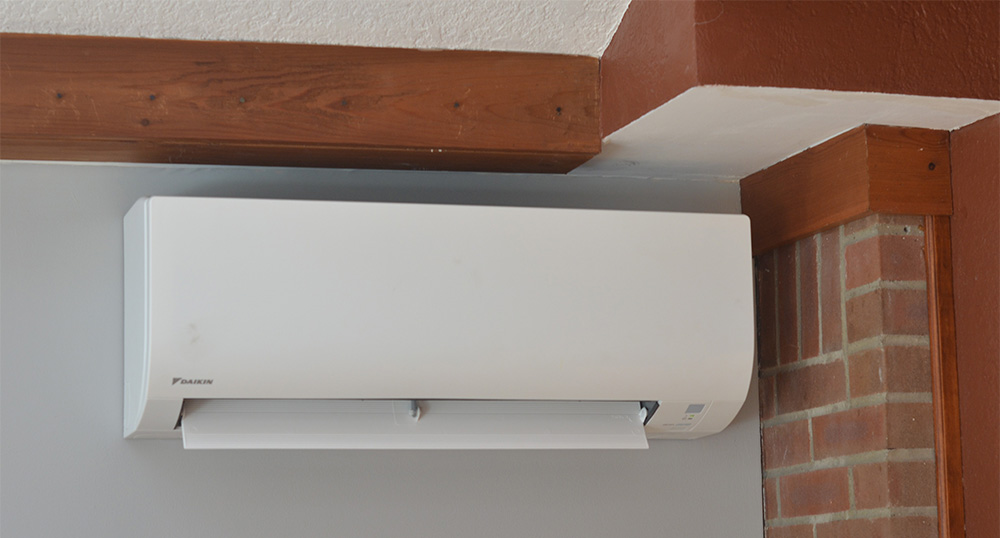
Vanderhorst also mentioned that the heat pump could run differently than traditional heating and cooling systems.
For one thing, the run times can be longer. “It’s hard for consumers not to associate longer run times with higher bills. Sometimes that longer run time equals a smaller bill because it’s doing its continuous work to keep the space at an even temperature,” he explained.
When asked if there were any downsides to heat pumps, Vanderhorst said he did not think there were, other than their complexity. “It is very complex equipment, and it’s important that your service providers understand how to work on them.”
In the past, heat pumps were known to be somewhat noisy. Newer models are quieter.
Ohio residents can use various rebates and tax incentives to help pay for heat pumps. One such opportunity is the Home Electrification and Appliance Rebates program. Federal tax credits are also available for ENERGY STAR Most Efficient air-source heat pumps. There are other money-saving opportunities available. Homeowners should partner with contractors who can assist them.
Climate change is happening. One question that gets asked is, “What can I do about it?” Getting a heat pump might be something to consider.


